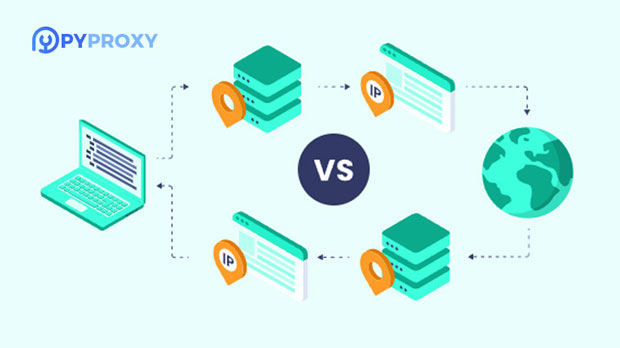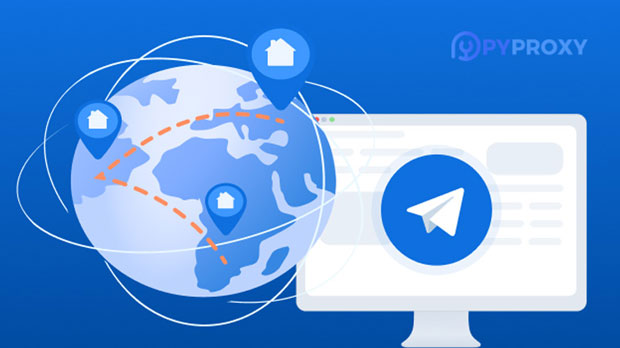Managing Residential socks5 proxy IPs in bulk is an essential skill for professionals involved in various online tasks that require anonymity, geo-spoofing, and secure web scraping. Bulk proxy management optimizes the use of proxies, streamlines operational workflows, and ensures better performance across tasks like market research, SEO analysis, and data collection. It also enables users to control costs while ensuring high availability and reliability. This article explores in-depth techniques and tips for handling Residential SOCKS5 proxy ips effectively, with a focus on maximizing efficiency, reducing risk, and maintaining a sustainable proxy management strategy. Understanding Residential sock s5 proxiesBefore diving into bulk management techniques, it’s essential to understand what Residential SOCKS5 proxies are. These proxies are typically provided by residential ISPs and routed through real devices, making them much harder to detect compared to data center proxies. SOCKS5, specifically, is a versatile protocol capable of handling various types of traffic, including HTTP, HTTPS, and even peer-to-peer applications. These proxies are often preferred for tasks that require high levels of anonymity, like web scraping, automated account management, and ad verification.Why Bulk Management of Residential SOCKS5 Proxies Is CrucialThe bulk management of Residential SOCKS5 proxies provides numerous advantages for organizations and individuals relying on proxies for large-scale projects. Managing proxies in bulk allows for enhanced flexibility, streamlined control, and more efficient use of resources. It can be an effective way to mitigate risks such as IP blocks, slow connection speeds, and service interruptions. Moreover, it ensures that proxies are rotated regularly and used strategically to maintain access to restricted resources while staying under the radar of websites and online services.Key Strategies for Bulk Proxy ManagementManaging a large pool of Residential SOCKS5 proxies efficiently requires a few specific techniques:1. Proxy Pool SegmentationSegmentation of the proxy pool is one of the most effective ways to manage Residential SOCKS5 proxies in bulk. By grouping proxies based on their geographic location, speed, or IP quality, users can allocate proxies according to specific needs. For instance, proxies from a specific region may be assigned to web scraping tasks that require access to local content, while higher-quality proxies may be used for more sensitive tasks like logging into multiple accounts simultaneously.2. Automated Proxy RotationAutomation is key when managing proxies in bulk. Proxy rotation helps in reducing the likelihood of IP bans and maintaining a consistent connection. Automation tools can be set up to rotate proxies at regular intervals, ensuring that tasks are always performed using fresh IPs. This is particularly important for tasks like web scraping or data mining, where using the same IP repeatedly can trigger anti-bot defenses and result in blocks.3. Monitoring Proxy Health and PerformanceTo ensure reliable proxy management, it’s crucial to monitor the health and performance of the proxies in use. Proxy performance metrics such as latency, connection success rate, and geographic availability must be regularly evaluated. This allows users to identify faulty or slow proxies and replace them promptly. Using proxy monitoring tools can automate this process, alerting users when specific proxies are underperforming or have been flagged.4. IP Rotation AlgorithmsAdvanced IP rotation algorithms can significantly enhance bulk proxy management. These algorithms ensure that the proxies rotate based on specific triggers such as request frequency, time, or a maximum number of connections. This technique not only helps in avoiding bans but also allows for more efficient use of the proxy pool, reducing unnecessary overhead and ensuring that proxies are used optimally across different tasks.5. Proxy Quality and Avoiding OveruseNot all Residential SOCKS5 proxies are created equal. Proxy quality can vary based on factors like ISP reliability, the number of users sharing an IP, and geographical location. By avoiding overuse of a single proxy or group of proxies, users can prolong their lifespan and reduce the risk of being flagged or blocked. Implementing a system to monitor proxy usage frequency ensures that no single proxy is used too frequently, maintaining the integrity of the pool.6. IP Whitelisting and BlacklistingWhitelisting and blacklisting are essential components of effective proxy management. Whitelisting allows for the inclusion of trusted IP addresses or ranges that are not subject to the same scrutiny as other proxies. Blacklisting, on the other hand, helps to block problematic or flagged IP addresses that may cause issues. Combining these techniques helps create a more reliable and secure proxy management system, especially when working with sensitive online tasks.7. Proxy Pool ScalingAs the demand for proxies increases, so does the need for a larger pool. Scaling your proxy pool ensures that there are always enough fresh and available proxies for different tasks. Scaling can be done by adding more proxies to the existing pool or by sourcing proxies from multiple providers. Managing a large pool efficiently requires careful tracking of each proxy’s performance and geographic location to avoid overloading any single source.Tools for Managing Residential SOCKS5 ProxiesSeveral software tools are available that simplify the bulk management of Residential SOCKS5 proxies. These tools can help automate tasks like proxy rotation, monitoring, and performance analysis. Some popular options include proxy management platforms, API services, and self-hosted proxy servers. Leveraging these tools can significantly enhance the efficiency of proxy management, allowing users to focus on more critical aspects of their projects while ensuring a smooth proxy operation.Best Practices for Successful Bulk Proxy ManagementTo ensure the success of bulk proxy management, it’s important to follow a set of best practices:1. Regular Proxy RotationRegularly rotating proxies prevents websites from detecting and blocking repeated usage of the same IP. Rotation should be automatic and occur at set intervals or when specific criteria are met.2. Monitoring and Performance EvaluationConstantly monitoring proxy health and performance ensures the avoidance of slow or compromised proxies, keeping operations smooth and uninterrupted.3. Balancing Proxy UsageCarefully balance the usage of proxies to avoid overloading specific IP addresses, which can result in slow speeds or detection. Using different proxies for different tasks can help distribute the load effectively.In conclusion, managing Residential SOCKS5 proxies in bulk is a task that requires attention to detail and the use of efficient strategies. From segmentation and rotation to quality control and scaling, there are many factors that contribute to successful proxy management. By implementing the right techniques and utilizing appropriate tools, users can ensure the reliable performance of their proxies while minimizing risks associated with IP blocks and performance issues. The ultimate goal is to streamline proxy management to enhance efficiency, save costs, and maintain a secure, anonymous browsing experience across large-scale operations.
Sep 01, 2025



































































